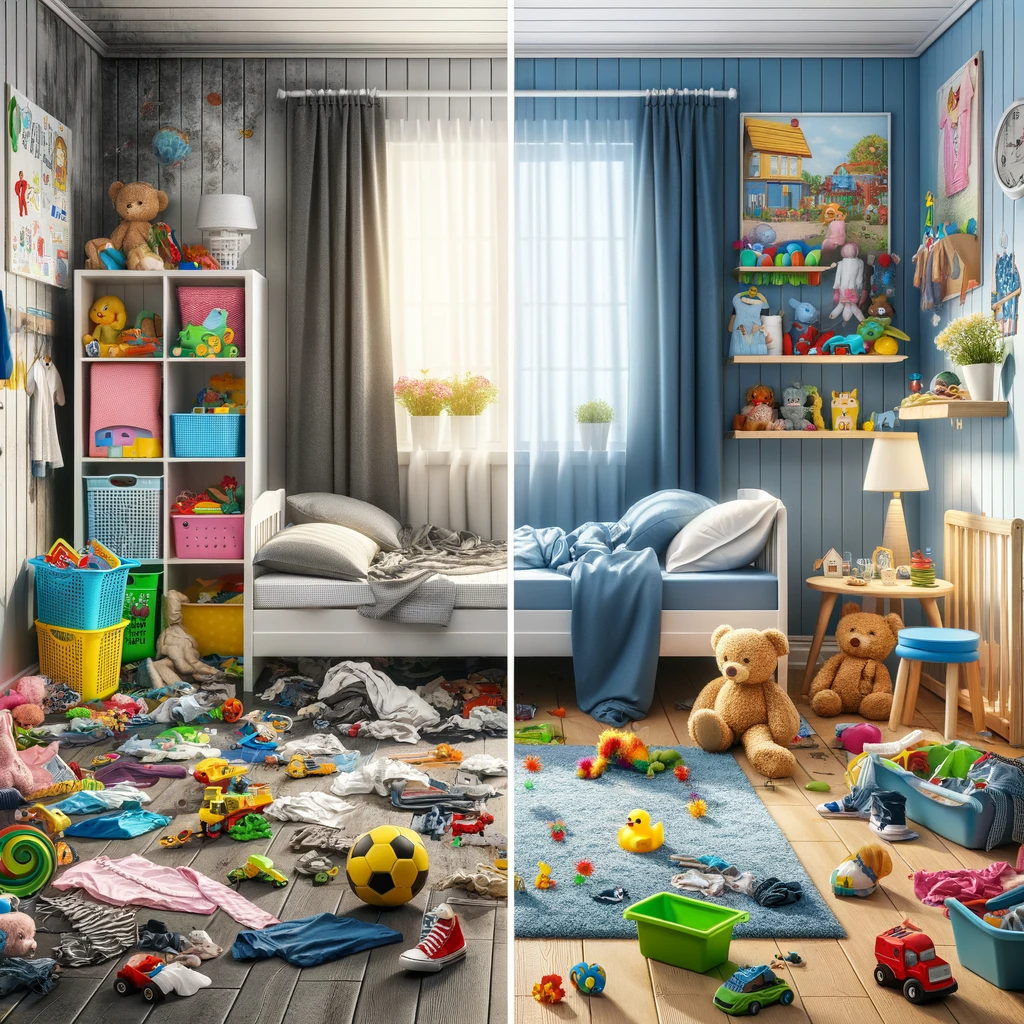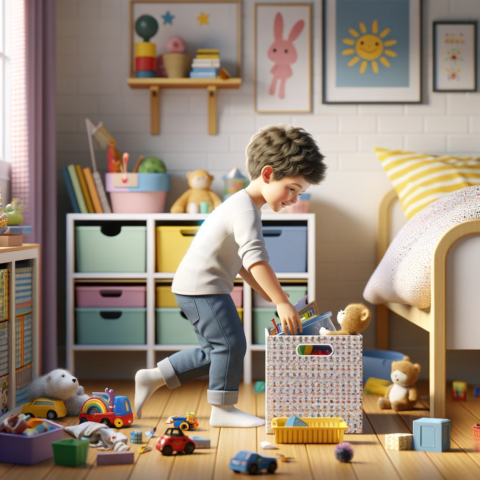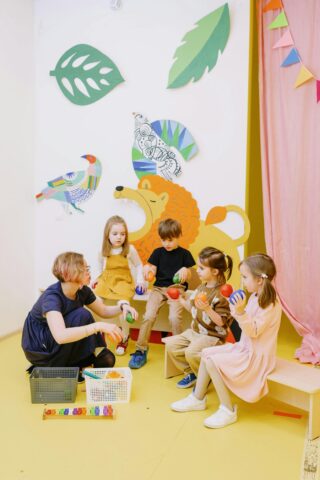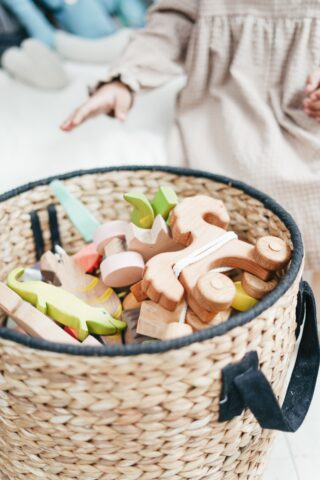If you’re a parent, then the words ‘kids’ room organization’ is not new to you. We know how overwhelming it could be to keep your child’s room organized and how quickly it turns into a mess after cleaning it up. But, don’t worry, in this blog post, we will be discussing some practical strategies to keep your child’s room neat and tidy.
As a parent, keeping your kids’ room organized and pristine can be a constant challenge. With toys, clothes, and books everywhere, it can feel like a losing battle. But fear not! With a little bit of strategy, you can transform your child’s room into a tidy and functional space that they’ll love spending time in. In this post, we’ll outline some key strategies for keeping your kids’ room organized and help you create a space that works for everyone.
Organizing your child’s room can be a daunting task, but by involving your child, having storage solutions, keeping fewer things, rotating toys, and cleaning regularly, you can create a neat and tidy space that your child will love. Remember to make it fun and allow your child to have some say in how their room looks. A clean and organized space can help your child focus and create a sense of calm in their room.
1. Involve Your Child: The primary goal of organizing your child’s room is to inculcate the habit of tidiness in them. Therefore, it’s essential to involve your child in the process. Explain to them why it’s important to keep their room organized, and how a clean room can help them stay focused and happy. You can set a weekly cleaning routine for them, where they will spend a few minutes cleaning their room every day. You can also involve them in decorating their room with storage and organizing solutions.
2. Storage Solutions: Storage solutions are key to having a tidy space. It’s crucial to have a designated spot for everything in your child’s room. Invest in storage containers, bookshelves, and toy boxes. Teach your child to put things back in their designated storage places after they are done playing with them. Also, label shelves and containers to make it easier for your child to identify where things belong.
3. Less is Better: When it comes to your child’s room, less is better. Too many toys and clothes make the room look cluttered, and your child may find it challenging to choose what they want to play with. Donate or sell toys that your child no longer plays with, and get rid of clothes that no longer fit.
4. Rotate Toys: Rotating your child’s toys is an excellent strategy to keep their room organized. Choose a few toys to keep available in their room for a particular period. The rest of the toys can be stored away. After a few weeks or months, switch the toys and bring in the ones that were stored away. It’s a great way to create a new interest in your child and keep their toys organized.
5. Clean Regularly: It’s essential to clean your child’s room regularly to keep things in order. You don’t have to deep clean every day, but a quick pick-up and wipe down of surfaces can make a significant difference. You can make it fun by putting on some music and cleaning together with your child for a few minutes a day.
6. Set up a storage system: Make use of storage bins, baskets, and shelves to keep clutter at bay. Teach your kids where everything belongs so they can take part in keeping the room tidy. High shelves can be used to store items less frequently used, while easily accessible bins can hold toys and books.
7. Purge regularly: Toy clutter is one of the biggest contributors to a messy kids’ room. Encourage your child to donate or sell toys they no longer use. This not only keeps the room from becoming over-crowded, but it also teaches kids responsibility and generosity.
8. Utilize vertical space: Maximize wall space with shelves, hooks, and hanging organizers. This helps keep items off the floor, freeing up valuable play space, and giving the room an open feel. A hanging closet organizer or shoe rack behind the door can be great for storing extra items.
9. Simplify bedding and linens: Keep bedding and linens to a minimum, ideally just one or two sets per child. This not only reduces the amount of laundry, but it also limits the number of items taking up storage space. Choosing multicolored bedding also makes it easy for kids to mix and match, giving them the feeling of having more variety in their room.
10. Designate play zones: Create clearly defined areas in the room for different activities, such as play, reading, and homework. This helps kids understand where things belong and keeps everything organized. Consider using a rug or floor mat to define play areas.
Keeping your kids’ room organized doesn’t have to be a challenge. By implementing storage systems, purging regularly, utilizing vertical space, simplifying bedding and linens, and designating play zones, you can create a functional and inviting space for your child to grow, learn, and play. And remember, involving your child in the process gives them a sense of ownership and responsibility that will serve them well into adulthood. So roll up your sleeves, grab some storage containers, and get started on creating the perfect organized space for your child.
The Importance of Organizing Kids’ Rooms
1.1. Promoting Independence:
- Discuss how an organized room empowers children to take responsibility for their belongings.
- Mention the positive impact on their self-esteem and decision-making skills.
1.2. Facilitating Learning:
- Explore how a well-organized space can enhance learning experiences for children.
- Discuss the connection between an organized environment and cognitive development.
1.3. Creating a Calm Environment:
- Address the influence of a clutter-free space on a child’s mental and emotional well-being.
- Discuss the potential reduction in stress and anxiety.
Section 2: Planning and Designing the Kids’ Room (Approx. 800 words)
2.1. Functional Furniture:
- Explore furniture choices that maximize storage and organization.
- Discuss the benefits of multifunctional and modular furniture.
2.2. Color Psychology:
- Discuss the impact of colors on children’s moods and behavior.
- Offer tips on selecting a color scheme that promotes a calm yet stimulating atmosphere.
2.3. Zoning the Room:
- Provide insights on creating designated areas for sleeping, playing, and studying.
- Discuss the importance of defining these zones for optimal organization.
2.4. Involving Kids in the Design Process:
- Encourage parents to include children in decisions about room layout and decor.
- Discuss the positive effects on the child’s sense of ownership and responsibility.
Section 3: Storage Solutions for Kids’ Rooms (Approx. 1200 words)
3.1. Clothing and Accessories:
- Explore innovative storage solutions for clothing, shoes, and accessories.
- Discuss the benefits of rotating seasonal clothing.
3.2. Toy Organization:
- Provide tips for managing and organizing toys efficiently.
- Discuss the idea of toy rotation to keep the space fresh.
3.3. Bookshelves and Reading Nooks:
- Highlight the importance of a designated reading area.
- Discuss creative book storage solutions.
3.4. Art and Craft Supplies:
- Offer strategies for organizing art and craft materials.
- Discuss the benefits of a dedicated crafting space.
Section 4: Daily Maintenance and Organization Habits (Approx. 1000 words)
4.1. Teaching Organization Skills:
- Discuss age-appropriate ways to involve children in maintaining their space.
- Share tips for turning organization into a positive habit.
4.2. Daily and Weekly Routines:
- Provide sample routines for morning and evening organization.
- Discuss the importance of involving the whole family in maintaining order.
4.3. Problem-Solving Strategies:
- Address common organizational challenges and provide practical solutions.
- Encourage flexibility in adapting strategies based on the child’s evolving needs.
Key insights
- Recap the importance of a well-organized kids’ room for both parents and children.
- Encourage readers to embrace the journey of creating a space that grows with their child.
- End with a call-to-action, inviting readers to share their own tips and experiences in the comments.



